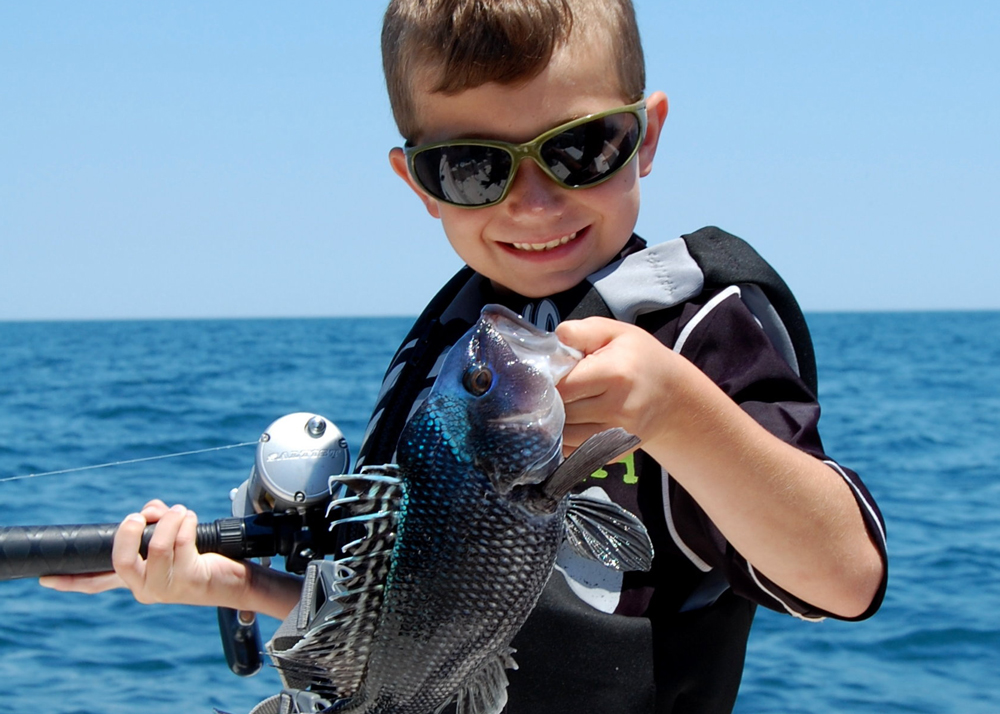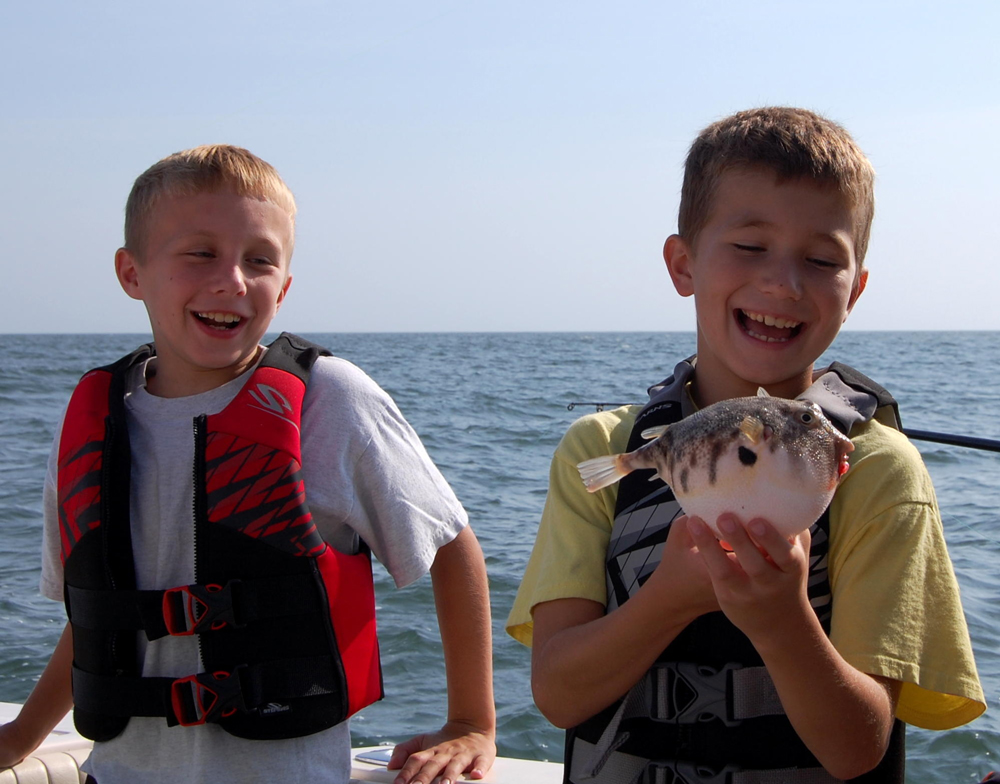Several boats were always moored at the end of our pier growing up. At age eight, my first boat was a 14-foot leaky flat-bottom planked rowboat. That fantastic fishing platform took me as far as my tired arms could row, while occasionally stopping to bail portions of Bear Creek, off the Patapsco River, back into the water. At 11 years old I was the proud owner of a 12-foot V-bottom fiberglass boat with 5.5 horsepower Johnson; no fish within range of the six-gallon fuel tank was safe. Summers were spent by fishing every day. If I lost track of time, a glimpse of dad’s boat off in the distance could be seen checking up on me. These was no phone, and no radio. Just a boy in his boat fishing. Fast forward 25 years, and my sons are in their 15 foot Mckee Craft with an 18 horse Evinrude, terrorizing fish in the very same waters I did. And yes, I’d worry and ride out to check on them periodically when they were gone for too long. Today, my 10 grandchildren have all had rods in hand and sea legs from the time they could walk. What’s the point I’m trying to make? When I took my sons and grandchildren offshore for the first time (and when my dad took me) there was a level of confidence that they could handle the experience.

I cut my offshore fishing teeth before Loran C; a course was plotted and run by compass and watch. Of course, seldom did we fish more than 20 miles off the beach, mainly in the vicinity of the Jackspot, about 21 miles South-East of the Ocean City inlet. With today’s electronics and reliable engine technology, I feel very comfortable running the grandkids out to the canyons to go tuna trolling and deep drop for golden tilefish. However, 60-plus miles is a long way for anyone, in any vessel. So the question will often arise: Is it prudent to take children offshore, and if so at what age?
Only a parent can answer that question – every child is different in maturity, ability and patience. I was taken offshore by age nine, my sons at age six, and my grandkids around the age of seven. Charter clients often asked about the feasibility of taking along the children. Normally after a few minutes speaking with the child a quick assessment would be made to decide whether a trip offshore was in their immediate future. Many times, near-shore fishing options were offered in lieu of running to the canyons. Here are a few suggestions to consider before taking a child offshore.
- Charter boats carry Type 1 life jackets. However, they are not very comfortable for a child to wear. A comfortable personal life jacket sized for the child certainly will make the trip more enjoyable for them. Keep a life jacket on the child at all times, even if not required.
- Does the child swim like a fish? Are they comfortable in or around water? Out on the ocean with no land in sight is not the place to hope a child who is apprehensive around water will get over the anxiety. The first trip should be a few miles off the beach and within sight of land, wreck fishing for sea bass, trolling for bluefish, or drifting for sharks. I never met a kid who did not get excited about fishing for and catching a shark, no matter the species. Plus, seeing high-rise condos in the distance gives a feeling of reassurance.
- Has the child been on boats before? How do they handle the feeling of motion? Can they sit in the back seat of a car looking down to read or play video games? If so, sea sickness probably won’t be an issue, but the ocean is different than the Bay. Even on a flat day the seaworthy Bay angler often finds the ocean treats the stomach differently. And remember, if the trip is on a party boat to bottom fish and the child becomes sick, there is no turning back. However, I will say that most children handle the ocean better than adults. It may be advisable to take the child on a scenic boat ride along the coast, prior to chartering or running your boat offshore.
- Teach kids how to operate the rods and reels, which may be different than the ones they’re used to using, before the trip. The deck of a boat bobbing around in the ocean is not a great classroom, especially with the chaos of a big fish on the end of the line.
- Age is going to determine when the child can learn to strip down a squid or rig ballyhoo. Don’t force them to accomplish these tasks, it will come over time. Remember that looking down and inhaling the smell of baits can increase the likelihood of seasickness. It may also be beneficial to bait their hooks when first starting out, instead of pushing them to do it. After watching you rig over several trips, one day he or she will say, “can I do that?”
- Don’t force a trip on a questionable day when it comes to weather. A white-capped choppy day blowing 10 to 15 out of the North-East is not fun for anyone, and may possibly make the child gun-shy for next trip.
- Children like to do something, so give them a task. This makes them one of the crew. This can be anything from watching rod tips for a bite, to picking up the washdown hose and spraying the deck every time a fish is brought onboard.
- Every child wants to “run” the boat. This is perfect time to explain GPS and chartplotters, fish finders, radar, compass bearing, etc. Let them sit behind the helm and hold the wheel – it will put a big smile on their face.

Fishing should be fun!!!!! Explain beforehand what the child can expect offshore. And, if the child makes a mistake and snaps off the largest tuna you have ever seen, instead of getting upset be happy – it probably made him or her an offshore angler for the rest of their life!
By John Unkart, author of Offshore Pursuit and Saltwater Tales. You can find books by John Unkart on Amazon.